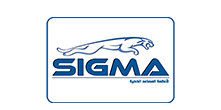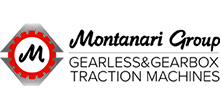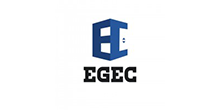What is an Electric Elevator and Its Basic Components?
What is an Elevator?
An electric elevator is a mechanical system used to
transport people or goods between floors in residential, commercial, or
industrial buildings using electrical power. It is considered a modern solution
that saves time and effort, especially in high-rise buildings. Below are the
main components of an elevator:
Lifting Motor:
The core component of an elevator system, providing the power to move the cabin
up or down, powered by electricity.
Cabin:
The space where passengers ride or goods are transported, designed for comfort
and safety.
Cables or Ropes:
These transfer motion from the motor to the cabin and are highly durable to
ensure safety and reliability.
Guide System:
Helps the cabin move along a defined path between floors and is fixed to the
walls for straight movement.
Additional Components
Control Panel:
Acts as the brain of the elevator, controlling its operation with buttons for
floor selection and service requests.
Safety System:
Ensures passenger safety in case of malfunctions, including emergency brakes
and alarm systems.
Automatic Doors:
Open and close automatically when the cabin reaches the desired floor, ensuring
ease of use and safety.
Lifting Mechanism:
Works with the motor to lift the cabin, either using cable-driven or hydraulic
systems depending on the elevator type.
Advantages of Nano-Lift Technology
Nano-lift technology refers to cutting-edge
innovations in elevator design aimed at improving efficiency, safety, and
energy consumption. These advanced systems enhance elevator performance and
reliability. Below are its key advantages:
Improved Energy Efficiency:
Utilizes modern systems to significantly reduce energy consumption, lowering
operational costs.
Increased Speed and Performance:
Advanced technologies enable smooth and flexible operation, reducing wait
times.
Enhanced Safety with Precision Technology:
Features precise control systems and advanced sensors to minimize risks of
malfunctions or accidents.
Environmental Sustainability:
Improves energy efficiency and reduces resource consumption, thus benefiting
the environment.
Simplified and Cost-Effective Maintenance:
Advanced technology ensures efficient performance, reducing the need for
frequent and expensive maintenance.
Extended Lifespan:
Modern technologies reduce motor stress, enhancing the elevator's longevity and
sustainable performance.
Steps to Install an External Elevator
Installing an external elevator requires precise
planning and execution to ensure efficiency and safety. Below are the main
steps:
Site Assessment and Need Evaluation:
Determine the ideal location, assess space availability, and ensure the
building structure can support the elevator. Obtain approvals from civil and
architectural engineers.
Choosing the Right Design and Type:
Select the type of external elevator (glass, hydraulic, panoramic) and ensure
the design matches the building’s architectural style.
Engineering Drawings and Designs:
Create detailed plans showing the elevator’s location, motor and cable points,
and compliance with safety standards.
Site Preparation:
Prepare the site by digging the elevator shaft, constructing a supporting
structure, and installing the required electrical systems and emergency
systems.
Mechanical System Installation:
Install the motor, cables, or hydraulic systems, and set up guides to ensure
smooth cabin movement.
Safety Inspection:
Test the elevator's speed, response, and emergency systems, such as brakes and
sensors, and obtain safety certification.
Operation and Training:
Test the elevator’s performance, train users on safe operation, and provide a
user manual.
Types of Elevator Maintenance
Regular maintenance is essential to ensure elevators
function safely and efficiently. Maintenance includes mechanical and electrical
checks to optimize performance and reduce downtime. Below are the main types of
elevator maintenance:
Preventive Maintenance:
Focuses on identifying and resolving potential issues through planned
inspections. Tasks include:
- Checking
cables and wires.
- Lubricating
moving parts.
- Testing
motors, brakes, and safety sensors.
Corrective Maintenance:
Addresses repairs for issues that occur during usage. Tasks include:
- Repairing or
replacing damaged parts.
- Resolving
mechanical or electrical problems.
- Reprogramming
control panels when needed.
Predictive Maintenance:
Relies on advanced technology like sensors and AI to anticipate issues before
they occur. Tasks include:
- Monitoring
real-time performance of key components.
- Using
operational data to identify parts needing replacement.
Emergency Maintenance:
Conducted during sudden breakdowns. Tasks include:
- Resolving
power outages or cabin stoppages.
- Ensuring
quick and safe reactivation.
Upgrade and Modernization Maintenance:
Involves improving older systems. Tasks include:
- Replacing
motors or control panels.
- Installing
energy-efficient systems.
Home Lift: The Perfect Solution for Homes
A home lift is a type of elevator designed for
residential buildings, featuring a compact and elegant design suitable for
villas and multi-story homes. It offers convenience and ease of mobility,
especially for the elderly and people with special needs.
Benefits of Home Lifts:
Compact and Stylish Design:
Can be customized to match home interiors and requires minimal space for
installation.
Easy Installation:
Does not require a pre-built elevator shaft, making it ideal for homes without
prior elevator infrastructure.
Comfort and Safety:
Equipped with advanced safety systems, including sensors and emergency buttons,
to ensure secure mobility.
Energy Efficiency:
Operates on economic systems that consume less energy, with quiet motors for a
disturbance-free environment.
Flexible Placement Options:
Can be installed indoors or outdoors, with various options like glass or enclosed designs.
Commercial Uses:
1.
In Offices and Companies:
Ensuring fast and efficient movement between floors, supporting a comfortable
working environment, especially in multi-story companies.
2.
In Shopping Centers:
Facilitating customer movement between floors, especially in malls and retail
outlets, while enhancing the shopping experience.
3.
In Hotels: Providing comfort
and ease of movement for guests, particularly when transporting luggage between
floors, with options for panoramic or luxurious designs that suit the hotel
ambiance.
Industrial Uses:


















